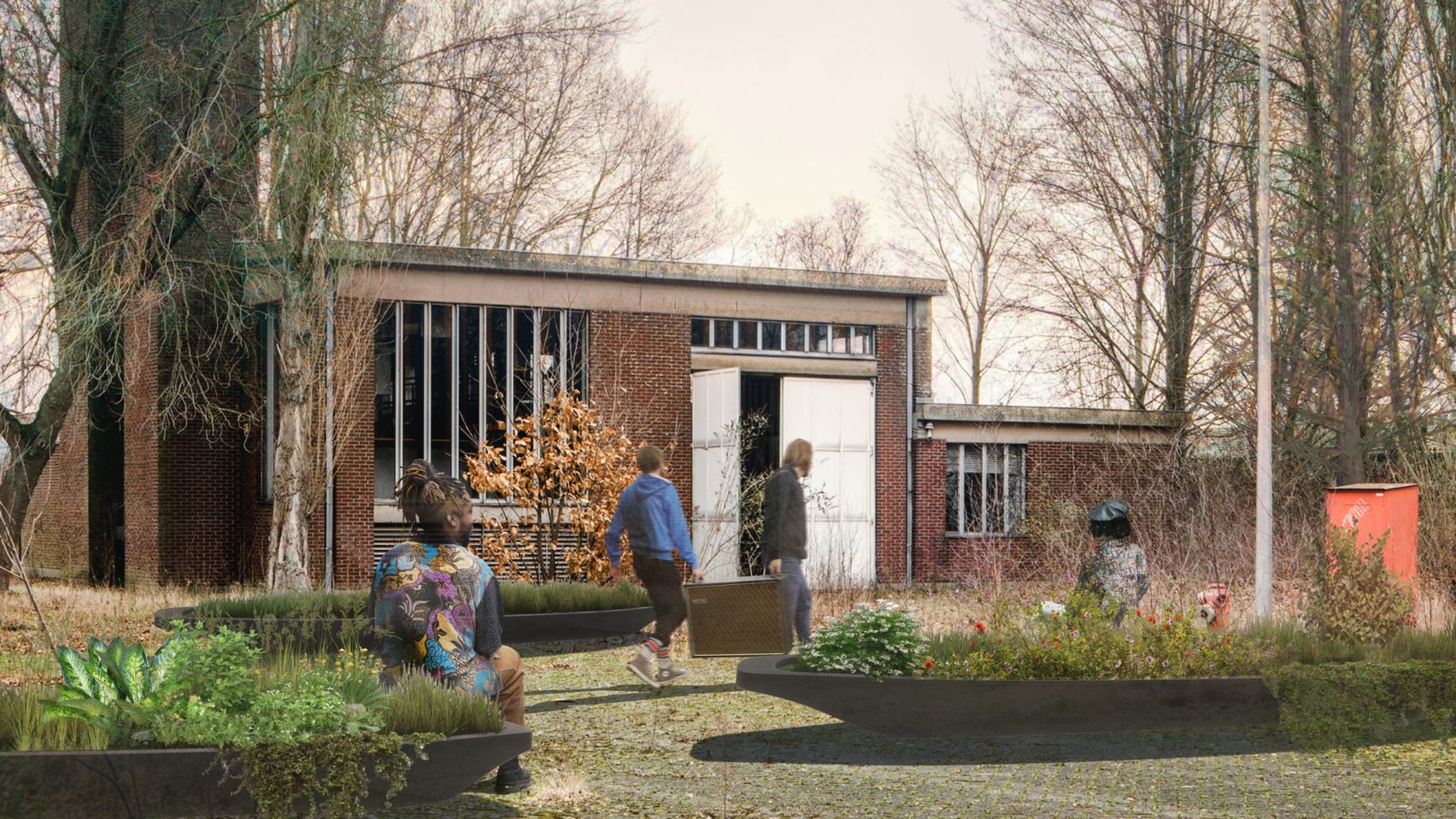Less experimentation and more safe spaces will define architecture in 2024

Architects from studios including Counterspace and OMA expect less extravagant and more community-centric designs to dominate the global architecture scene in 2024.
Dezeen spoke to architects from leading and emerging studios worldwide to get their predictions for the trends that could define the industry this year.
For most, world affairs are expected to have the biggest impact on architecture in 2024 and beyond, as countries begin “looking inward” and become more protectionist.
“The era of abundance seems to be coming to an end”
“The honeymoon period of globalisation is over,” said MVRDV Asia studio director Wenchian Shi.
“Each country and each continent is looking more inward and trying to be more defensive,” she told Dezeen.
OMA‘s managing partner David Gianotten agreed, suggesting that “the era of abundance seems to be coming to an end”.
“We are facing a shortage of resources,” he said.
Gianotten added that the Covid-19 pandemic and, more recently, two major wars, have “caused a sense of insecurity among many of us”.
He said this will lead to “new design approaches” that prioritize local communities and creating safe spaces.
“People worry about their communities, and they want to know how they can be in positions to help,” Gianotten explained.
“I think the built-environment industry will focus more on creating safe places where different agents in the community can have an increased sense of belonging, and act for the common good.”
This echoes the hopes of Counterspace founder Sumayya Vally for 2024, which are to give voices to local communities that may have previously been overlooked.
“I would love to see architecture made in the image of diverse experiences and perspectives, architecture that listens deeply to its contexts,” said Vally, who was named emerging architect of the year at Dezeen Awards 2023.

World affairs will cause “less experimentation”
Meanwhile, Snøhetta co-founder Kjetil Trædal Thorsen believes that current world events will lead to more restrained architecture in 2024 and beyond.
“Right now, there should be no doubt that the ongoing conflicts, polarisation, and social inequality will continue to destabilize societies around the globe,” he said.
“This is already influencing the economy, politics, and thus also our clients, going for safer choices, known solutions, and less experimentation.”
MVRDV partner Stefan de Koning echoed this sentiment.
“Given the continuing crises in the economy, the environment, and everything else, I expect to see a decline in the luxury sector,” he said.
“This includes even places like the UAE, which has previously been very luxury-oriented, but where we are starting to see more interest in the idea of a less ostentatious style of architecture.”
However, Heatherwick Studio partner Mat Cash said the full effects of current world affairs will only be known later in 2024 when the world faces what The Economist has called the biggest election year in history.
“Over four billion people – more than half the global population – will be urged to vote,” said Cash. “Each of these moments will help define a movement either towards greater polarization and isolationism or towards more global cooperation,” he explained.
These elections could have “far-reaching impacts” on architecture, he said, as they will determine the world’s responses to the challenges it currently faces.

“We will focus our creativity on making the most of what we have”
Another trend expected to dominate in 2024 is a greater focus on sustainability.
“We might finally once again see the creation of our physical surroundings as a positive contribution to humanity rather than being a burden,” said Thorsen.
This was also a trend prediction for architects in 2023. However, architects told Dezeen that measures will become more targeted and, therefore, more effective this year.
“As more and more people feel the urgency of the issue, I think we will become more focused on managing specific risks that climate change brings to the built environment, rather than generic design approaches for environmental wellbeing,” said Gianotten.
Co-founder of Dutch studio Overtreders W Hester van Dijk expects an increase in architects prioritizing biobased materials – those made from biodegradable living matter.
“The Dutch government, for example, has just reserved €200 million to upgrade the percentage of biobased materials, by weight, in new buildings in the Netherlands from three percent to 30 percent,” she explained.
“The money is intended for farmers and builders to work together to put biobased building materials on the market.”
Meanwhile, Stuart Latham at Foster + Partners said more accurate carbon calculations for projects will emerge.
“With carbon calculations becoming more sophisticated, there will now be more certainty about predictions for the performance of buildings. Approximations will increasingly be left behind,” he explained.
Latham is also confident retrofit will become a top priority.
“Foster + Partners believe the idea of retrofit and the revitalization and reinterpretation of existing buildings will continue to gain strength as awareness about embodied carbon grows throughout the industry,” he said.
Alexandra Hagen, CEO of Dezeen Awards 2023 architecture studio of the year White Arkitekter, agreed.
“We will focus our creativity on making the most of what we have already built,” she said.
“As architects, we will use design as a tool to reinvent and revitalize the existing building stock in creative ways. It will have an impact from interior design to master planning.”

Public engagement will become a key
Heatherwick Studio partner Cash said the dedication to retrofit will also be visible in the way architects design new buildings in 2024, with a rise in studios designing for longevity.
“I think the conversations around sustainability will slowly shift from being purely concerned with a building’s life cycle to its actual life expectancy,” he said.
He said this will see a shift from “fast architecture” – buildings designed with a lifespan of 20 to 30 years – and more engagement with the public.
“We must have an aspirational mindset that looks to build for 1,000 years,” Cash argued.
“[The public] are the judges of a building’s longevity and ultimately their success,” he added. “2024 will be much more about how the public actively engages in this conversation and their voices will begin to be heard.”
This will also be catered for through the design of more mixed-use buildings, a typology that Zaha Hadid Architects associate director Melodie Leung expects more of in 2024.
“There is no longer an assumption that buildings will always be inhabited in the same way,” she explained.
“Clients and design teams are incorporating a more nuanced understanding of how the spaces in which people live, work and socialize may be shared and used differently across various times of day and how they can be adapted in future decades.”
The direction of AI in architecture disputed
However, architects disagreed about the direction that technologies such as AI will take in 2024 after the topic attracted significant hype in 2023.
For Hagen and Leung, continuing to upskill in this area will become increasingly important.
“Continuous upskilling in design, sustainability, and tech is crucial in 2024,” said Hagen. “Shortly, I believe we will be aided by new AI tools to analyze and design our projects.”
Leung said the fields of architecture and engineering will become “inseparable from the digital realm” in 2024.
“Advances in AI augment the ability of design teams to integrate complex layers of information and analysis in the design process to achieve more sustainable and longer-lasting buildings,” she explained.
Yet, at the other end of the spectrum, MAD founder Ma Yansong said architecture will shift away from technology next year.
“While engineering and technology quickly develop, architecture can respond and sync with human emotion,” Ma explained.
“Architecture is not a product or the pure outcome of technology, but also rooted deeply with art, culture, and civilization,” he continued. “We will leave behind pure digital architecture that has no expression or no soul.”
Meanwhile, Counterspace’s founder suggested the integration of AI with architecture is unavoidable, and encouraged architects to turn their focus to what they can control.
“Architects have been working with AI for several years,” Vally said.
“I think the question is not whether we will or won’t be affected by the shifts we know are coming, but how we can build platforms that amplify voices from multiple contexts, include different bodies of knowledge; and build models that are resonant with different perspectives.”
Specifically, Vally hopes more architects will look beyond mainstream trends in 2024 and pay more attention to the contexts in which they are designing.
“Rather than look to trends, we should study our past and present conditions to uncover the stories and histories that lie waiting in place,” she concluded.
Thorsen agreed, asking: “Maybe trends are a bit out altogether?”
You start dying when you stop dreaming.
